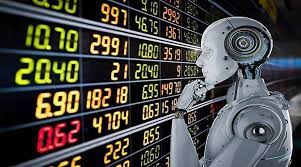Introduction:
In the ever-evolving landscape of financial markets, traders are constantly seeking innovative tools to gain an edge and optimize forex robot strategies. One such tool that has gained popularity in recent years is the forex robot. These automated trading systems promise to execute trades on behalf of the trader, utilizing pre-defined algorithms and strategies. While the concept of letting a machine handle your trades may sound appealing, it’s essential to understand the intricacies, benefits, and drawbacks of utilizing forex robots.
Understanding Forex Robots:
Forex robots, also known as expert advisors (EAs), are software programs designed to analyze the market, identify trading opportunities, and execute trades automatically on behalf of the user. These robots operate based on predefined parameters, including technical indicators, price action patterns, and risk management rules. Traders can either purchase pre-built forex robots or develop custom ones tailored to their specific trading preferences.
Pros of Using Forex Robots:
- Emotion-Free Trading: One of the significant advantages of forex robots is their ability to eliminate emotions from trading decisions. Fear and greed, common pitfalls for human traders, often lead to irrational decision-making and inconsistent results. Forex robots execute trades based solely on programmed algorithms, adhering strictly to predefined rules, thus minimizing the influence of emotions.
- 24/7 Trading: Unlike human traders who need rest, forex robots can operate round the clock, continuously monitoring the market for trading opportunities. This capability allows traders to capitalize on global market movements and react swiftly to changes, even during off-hours or when the trader is unavailable.
- Backtesting and Optimization: Forex robots enable traders to backtest their strategies on historical data before deploying them in live trading. This process allows traders to assess the performance of their strategies under various market conditions and make necessary adjustments for optimization. Additionally, traders can conduct robustness tests to evaluate the resilience of their strategies against market volatility.
- Enhanced Speed and Efficiency: Forex robots can execute trades at speeds far beyond human capabilities, leveraging algorithms to analyze market data and enter/exit positions within milliseconds. This speed advantage can be crucial in fast-paced markets where price movements occur rapidly, ensuring timely execution and minimizing slippage.
Cons of Using Forex Robots:
- Over-Optimization and Curve Fitting: While backtesting is a valuable tool for strategy development, it’s essential to guard against over-optimization. Overfitting occurs when a strategy is excessively tailored to historical data, performing well in backtests but failing to generalize to live market conditions. Traders must strike a balance between optimizing their strategies and ensuring robustness in real-world trading environments.
- Lack of Adaptability: Forex robots operate based on predefined algorithms, which may struggle to adapt to sudden changes or anomalies in the market. Unforeseen events, such as economic news releases or geopolitical developments, can cause significant market fluctuations that may not be adequately accounted for in the robot’s programming. Human traders often possess the flexibility and intuition to adjust their strategies in response to changing market dynamics, a capability that automated systems may lack.
- Dependency on Market Conditions: The effectiveness of forex robots is highly dependent on market conditions. Strategies that perform well in certain market environments may underperform or fail altogether when market conditions change. Traders must continuously monitor and adjust their robots to ensure they remain relevant and effective in evolving market conditions.
- Technical Challenges and Risks: Deploying and maintaining forex robots requires a certain level of technical expertise. Traders need to ensure proper configuration, connectivity, and reliability of their trading systems to avoid potential technical glitches or system failures. Moreover, as with any form of automated trading, there’s always a risk of software bugs or errors leading to unintended consequences or losses.
Conclusion:
Forex robots offer a compelling solution for traders looking to automate their trading processes and potentially capitalize on market opportunities with greater efficiency and consistency. However, it’s crucial for traders to approach automated trading with caution, understanding the inherent limitations and risks associated with relying solely on algorithmic systems. By carefully designing, testing, and monitoring their forex robots, traders can harness the benefits of automation while mitigating potential drawbacks, ultimately enhancing their overall trading performance in the dynamic world of forex markets.

